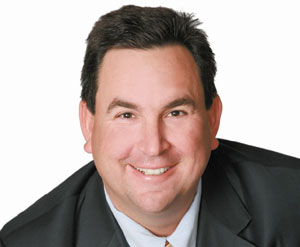The year goes by, you get busy … and tax-saving opportunities
slip away. So as a reminder, this article is here to reacquaint you
with some of the notable federal tax breaks offered this year.
The year goes by, you get busy … and tax-saving opportunities slip away. So as a reminder, this article is here to reacquaint you with some of the notable federal tax breaks offered this year.
The first-time homebuyer credit. This is the up-to-$8,000 credit available in 2009 to anyone who hasn’t owned a home during the previous three years. (It is subject to phase-outs at certain income levels.) The home you buy has to be your principal residence, and you have to buy it before December 1, 2009. The credit does not have to be paid back.
The IRA charitable rollover. This is the move that lets your IRA trustee make a tax-free direct transfer of up to $100,000 from your IRA to a charitable organization. This option is scheduled to go away in 2010. You must be age 70 1/2 or older to do this.
Three don’t-miss deductions for businesses. When it comes to new cars and light trucks used for business means, the maximum first-year depreciation deduction has been increased by $8,000 for cars placed in service before 2010. The Section 179 deduction (that’s the one that lets you write off the costs of certain new and used business assets during their first year of use) is still at $250,000 for 2009, instead of the prior $133,000. The first-year bonus depreciation break of $50,000 is still in place for 2009, and even the biggest businesses can take advantage of it.
The new car sales tax deduction. Okay, “cash for clunkers” is over, but you still may be able to deduct state and local sales and excise taxes if you buy a car, motorhome, motorbike or light truck. You can itemize the deduction or just add it to the amount of your standard deduction.
A major tuition tax break. In 2009, you can claim an above-the-line deduction for “qualified tuition and related expenses” relating to the enrollment or attendance of you, your spouse or your dependent at an eligible college or university. While it is subject to phase-outs at higher income levels, the deduction can be as large as $4,000.
The classroom teacher credit. Are you a primary or secondary school teacher? If you were an educator who worked more than 900 hours on campus in 2009, you can claim an above-the-line deduction for up to $250 of personal expenses for schoolbooks and school supplies that see classroom use. You don’t even have to itemize.
COBRA continuation. Did you get laid off this year? Were you insured under an employer-sponsored health plan? Well, you may qualify for up to nine months of (COBRA) coverage. As for the company where you worked, it can claim a credit for the COBRA subsidy it extends to you.
$2,400 in unemployment income tax-free. That’s right: this year, the first $2,400 of federal unemployment compensation benefits you receive are excluded from gross income.
An extra deduction for state and local property taxes. Do you usually claim the standard federal deduction? If that’s your plan, this year you can take an additional deduction for state and local property taxes. The ceiling is $500, $1,000 if you are filing jointly.
The capital gains tax break. If you are in the 10 or 15 percent tax bracket, note that the current tax rate for long-term capital gains is 0 percent – and it is slated to stay there through 2010.
The homebuilder tax credit. Do you build homes? If so, you may claim a credit of up to $2,000 for each qualified energy-efficient home constructed and acquired from you for use as a residence. This credit is set to expire December 31, 2009. President Bush’s signature extended it into this year.
And of course, the exemption from required IRA distributions. The federal tax mandate requiring IRA owners age 70 1/2 to take Required Minimum Distributions (RMDs) was suspended for 2009, but it will be reinstated for 2010. Worth noting: in 2010, anyone will be able to convert a traditional IRA into a Roth IRA.
This is just a sampling. There are other tax breaks out there during this unusual year for the federal tax code, and it is worth asking your accountant or advisor to do some research and/or collaborate to find you as many as possible.
Brad Ledwith is a certified financial planner and runs his own wealth management firm in Morgan Hill. He is a registered representative with and offers securities through LPL Financial, member NASD/SPC. CA Lic 0C69547. If you have financial questions you would like to have answered in this column in the future, e-mail br**@**************al.com.










